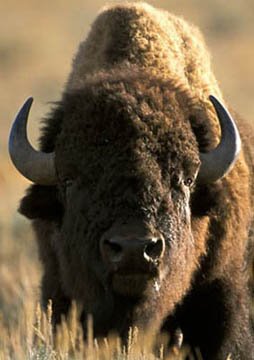
Wolf Woman likes llamas. While hiking in the Tennessee mountains she saw llamas used as pack animals. I think she would like to have a small herd of them, so for fun I thought I'd do some research on the critters.
THIS site has some basics, while
THIS fact-filled site claims "Llamas learn by behavior, all the time. It is part of their survival tactics. They will watch your small body movements, and even the expression on your face." Hmm.
 They come in a variety of colors, and apparently make good guardians, as a New York Times article notes: "The rationale for llamas is somewhat different than for other types of livestock. Sheep ranchers acquire llamas as guard animals for their flocks. The sheep's natural predators, foxes and coyotes, generally will not tangle with a llama, which can be more than six feet tall. Llamas get along quite nicely with sheep, and when a llama senses danger, it emits a high-pitched whinny that alerts the farmer to bring the shotgun."
They come in a variety of colors, and apparently make good guardians, as a New York Times article notes: "The rationale for llamas is somewhat different than for other types of livestock. Sheep ranchers acquire llamas as guard animals for their flocks. The sheep's natural predators, foxes and coyotes, generally will not tangle with a llama, which can be more than six feet tall. Llamas get along quite nicely with sheep, and when a llama senses danger, it emits a high-pitched whinny that alerts the farmer to bring the shotgun."
 And they seem to be reliable, hard workers, like this train of llamas on the job in the Tennessee mountains. Leading the llamas in this photo is a reporter, who was given temporary charge of the pack: "The llamas didn't make a sound when they walked," the reporter noted. "Despite that my shoes were crunching twigs and kicking rocks, there was no sound coming from the llamas. It was a little freaky. Actually, it was really freaky. If I didn't turn around and look, it felt as if I was holding a rope that was connected to nothing. I might as well have been leading a team of ghosts."
And they seem to be reliable, hard workers, like this train of llamas on the job in the Tennessee mountains. Leading the llamas in this photo is a reporter, who was given temporary charge of the pack: "The llamas didn't make a sound when they walked," the reporter noted. "Despite that my shoes were crunching twigs and kicking rocks, there was no sound coming from the llamas. It was a little freaky. Actually, it was really freaky. If I didn't turn around and look, it felt as if I was holding a rope that was connected to nothing. I might as well have been leading a team of ghosts."
 Backpacking llamas. I could have used one of these during my Appalachian Trail hikes. Very useful animals, as THIS article points out. I've thought of becoming a buffalo shepherd in my retirement, but a llama handler could be an option.
Backpacking llamas. I could have used one of these during my Appalachian Trail hikes. Very useful animals, as THIS article points out. I've thought of becoming a buffalo shepherd in my retirement, but a llama handler could be an option.
 Wolf Woman likes llamas. While hiking in the Tennessee mountains she saw llamas used as pack animals. I think she would like to have a small herd of them, so for fun I thought I'd do some research on the critters. THIS site has some basics, while THIS fact-filled site claims "Llamas learn by behavior, all the time. It is part of their survival tactics. They will watch your small body movements, and even the expression on your face." Hmm.
Wolf Woman likes llamas. While hiking in the Tennessee mountains she saw llamas used as pack animals. I think she would like to have a small herd of them, so for fun I thought I'd do some research on the critters. THIS site has some basics, while THIS fact-filled site claims "Llamas learn by behavior, all the time. It is part of their survival tactics. They will watch your small body movements, and even the expression on your face." Hmm. They come in a variety of colors, and apparently make good guardians, as a New York Times article notes: "The rationale for llamas is somewhat different than for other types of livestock. Sheep ranchers acquire llamas as guard animals for their flocks. The sheep's natural predators, foxes and coyotes, generally will not tangle with a llama, which can be more than six feet tall. Llamas get along quite nicely with sheep, and when a llama senses danger, it emits a high-pitched whinny that alerts the farmer to bring the shotgun."
They come in a variety of colors, and apparently make good guardians, as a New York Times article notes: "The rationale for llamas is somewhat different than for other types of livestock. Sheep ranchers acquire llamas as guard animals for their flocks. The sheep's natural predators, foxes and coyotes, generally will not tangle with a llama, which can be more than six feet tall. Llamas get along quite nicely with sheep, and when a llama senses danger, it emits a high-pitched whinny that alerts the farmer to bring the shotgun." And they seem to be reliable, hard workers, like this train of llamas on the job in the Tennessee mountains. Leading the llamas in this photo is a reporter, who was given temporary charge of the pack: "The llamas didn't make a sound when they walked," the reporter noted. "Despite that my shoes were crunching twigs and kicking rocks, there was no sound coming from the llamas. It was a little freaky. Actually, it was really freaky. If I didn't turn around and look, it felt as if I was holding a rope that was connected to nothing. I might as well have been leading a team of ghosts."
And they seem to be reliable, hard workers, like this train of llamas on the job in the Tennessee mountains. Leading the llamas in this photo is a reporter, who was given temporary charge of the pack: "The llamas didn't make a sound when they walked," the reporter noted. "Despite that my shoes were crunching twigs and kicking rocks, there was no sound coming from the llamas. It was a little freaky. Actually, it was really freaky. If I didn't turn around and look, it felt as if I was holding a rope that was connected to nothing. I might as well have been leading a team of ghosts."  Backpacking llamas. I could have used one of these during my Appalachian Trail hikes. Very useful animals, as THIS article points out. I've thought of becoming a buffalo shepherd in my retirement, but a llama handler could be an option.
Backpacking llamas. I could have used one of these during my Appalachian Trail hikes. Very useful animals, as THIS article points out. I've thought of becoming a buffalo shepherd in my retirement, but a llama handler could be an option.








2 comments:
I recommend a book called Buffalo for the Broken Heart (http://www.amazon.com/Buffalo-Broken-Heart-Restoring-Black/dp/037576139X/ref=sr_1_1?ie=UTF8&s=books&qid=1242226863&sr=8-1). It's a personal memoir by a guy who converts a cattle ranch into a buffalo ranch. You should do that!
I've read the book, Judy. A fantastic story and well written. The movie rights to the book have been purchased, so watch for that.
I couldn't be a buffalo rancher. Could never send one to slaughter.
Post a Comment